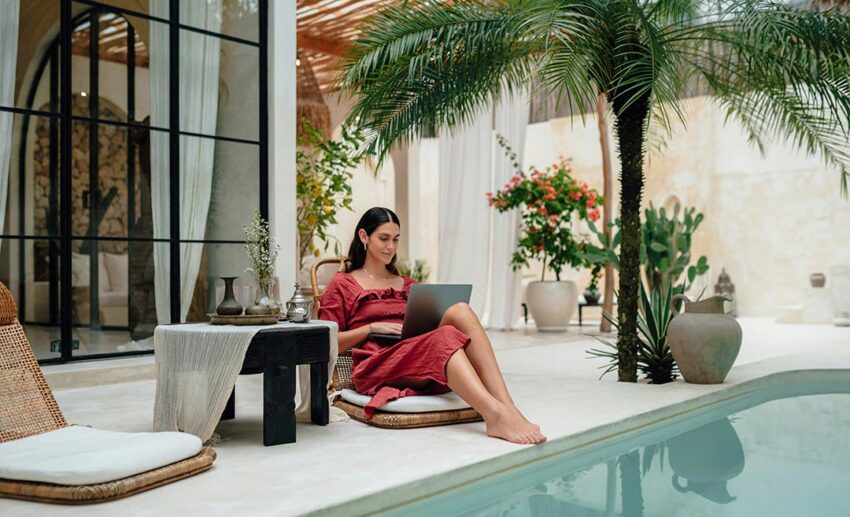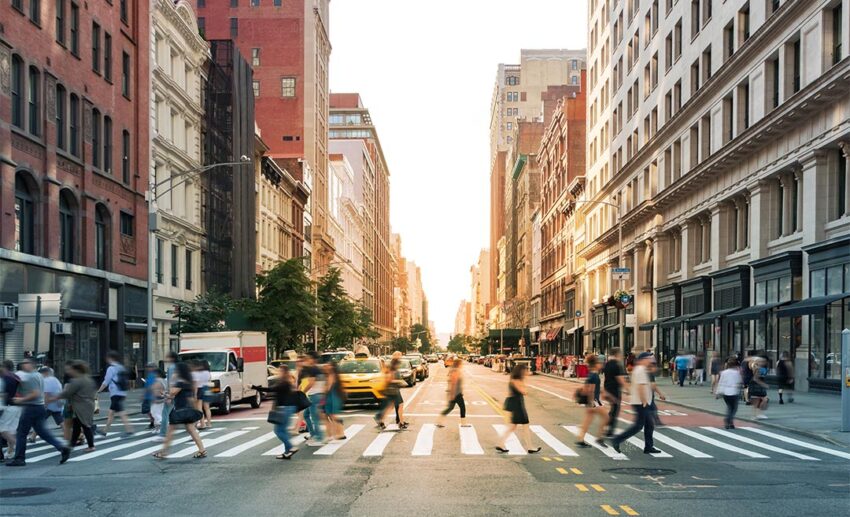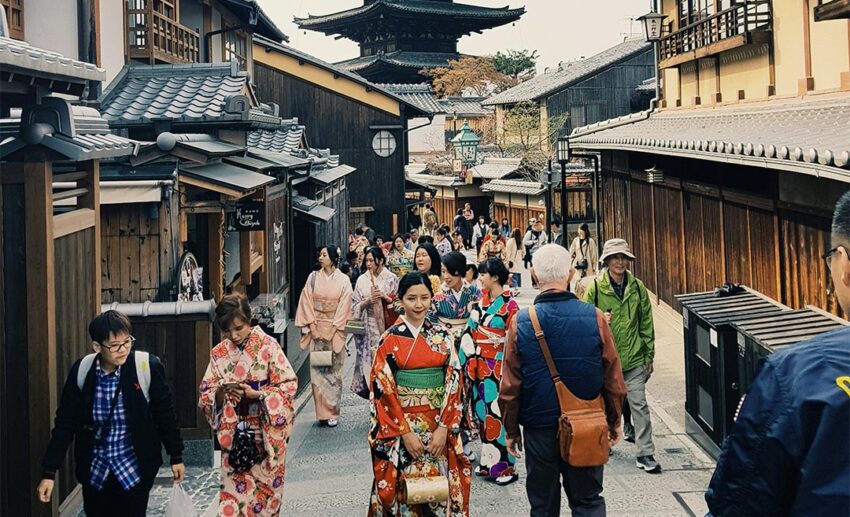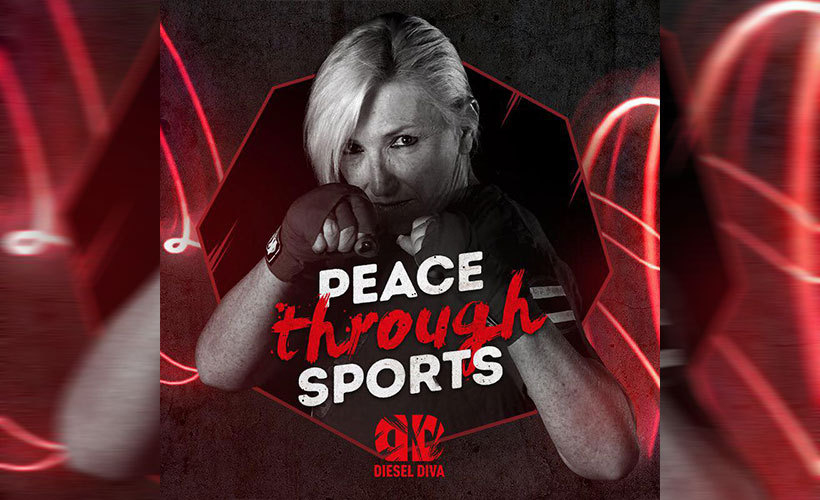I spoke to two self-defence experts for insights on travelling safely as a woman: Beverly Aisha Roach, a Certified Protection Professional and seasoned traveller, and Cassandra J Poyong, a Brazilian Jiu-Jitsu (BJJ) athlete and founder of Hikari Martial Arts. Beverly led self-defence workshops at the ZafigoX 2018 and ZafigoX 2019 conferences, while Cassandra led the Travel Safe with Self-Defence workshop at the recent ZafigoX 2024.
More women are travelling for leisure and business than ever before, though the world has yet to become a safe place for women to fully explore.
“While all travellers face potential dangers that may include anything from petty theft to natural disasters, transportation accidents and terrorism, female travellers often face other threats such as sexual assault, street harassment and opportunistic crimes,” says Beverly.
There are enough horror stories of unexpected ordeals that happened to women abroad to give anyone second thoughts about that dream solo trip. These fears are valid and should not be dismissed. However, it shouldn’t deter you from venturing out to see the world. With knowledge, preparation, and personal protection measures in place, you can feel safer anywhere and be more equipped to handle threatening situations that may arise.
Safe travel starts with a plan

As exciting as it is to travel somewhere for the first time, being in an unfamiliar environment where there may be language and cultural barriers can make you feel more vulnerable. Thankfully, with information at our fingertips in the internet age, you can research your destination beforehand and not be caught entirely off guard.
In fact, you should have personal safety in mind at every step of planning your trip, especially if you are travelling alone. Simple measures such as choosing your accommodation wisely and only staying in places with good track records and positive reviews by solo female travellers is a good start.
“Look at where you are planning to stay. Is the neighbourhood good, or is it isolated? Can you get to other areas easily? It’s also a good idea to ensure 24-hour security and restricted floor access. After checking in upon arrival, ensure locks work, and it is preferable not to have adjoining rooms with someone unknown,” Beverly advises. She also suggests that as an added personal security measure, pack some simple, low-cost tools such as a personal alarm or a door stopper.
It doesn’t end there; Beverly also advises one to gauge the situation thoroughly, “Are there natural hazards and diseases you may need to get vaccinated for? Is public transportation, standard taxi services and rideshare platforms safe? Are there laws I should know about? Are there visa restrictions? Do you have single-entry or multiple-entry privileges? Are there illegal medications? Are there limits on what you can bring into the country? Are there laws about what I can and cannot wear?”
Stay connected for peace of mind

Next, you want to be sure to have lines of communication set up and people to call in case you find yourself in a sticky situation.
“Have data available on your phone upon arrival. Check online ahead of time to see if there are arrival forms that can be completed in advance. Have reliable chat apps to maintain contact with trusted friends and family, and set up regular check-in times,” Beverly says.
At the same time, she adds that you should have a backup plan in case technology fails you. “Have a map app like maps.me that doesn’t require data once downloaded. Download your map on arrival, and if you lose data, you can still find your way back to your accommodation.”
A little situational awareness goes a long way

So, you have safely arrived, checked in to your accommodation, and are looking forward to a day of exploring. When it comes to moving safely in unfamiliar surroundings, the adage “when in Rome, do what the Romans do” strongly applies.
The key, Beverly says, is to be observant of your surroundings and blend in as best as you can. “Gender-specific travel issues may be related to the culture of the travel destination. While we might baulk at having to dress or act differently than we are used to, ensuring that we are culturally appropriate will help us to avoid drawing attention to ourselves and even causing offence.”
On top of that, when you are out and about, it pays to be always on alert. “Stay aware and present. Avoid distractions like excessive phone use or headphones in unfamiliar places. Being alert makes you a harder target,” says Cassandra.
Having to be extra vigilant may be challenging to some because it requires confronting your fears. But given that dangers can take on many unpredictable forms, Beverly notes that it is imperative that you understand your own vulnerabilities and know the risks. “Street harassment is common in many places and can include verbal and even physical harassment in crowded places such as markets and public streets. Bag snatching and pickpocketing are also common in tourist destinations. Know where you are going and be prepared before you leave your accommodation,” she cautions.
Boundaries: Your first line of self-defence

In the women’s self-defence workshops she conducts, Beverly usually starts off by having the participants do a boundary-setting drill. This is done by having participants practice raising their hands and yelling, “Back off!” in a commanding voice.
“For me, I start with boundary setting and situational awareness as well as the use of voice as a self-defence tool,” she explains. “Boundaries can include verbal, physical, psychological, emotional, ethical, moral and others. When we travel, verbal and physical boundaries are most likely crossed by strangers or new acquaintances. Consider boundary setting as the first line of self-defence—do not allow for grey zones. Ensure you know what you are uncomfortable with and make that clear to others.”
Are you prepared to defend yourself?

Of course, no self-protection strategy is foolproof. Despite the best efforts to steer clear of danger, there’s a possibility you’ll encounter a situation where physically fighting back is the only option.
Cassandra clarifies that defending yourself is not to be confused with martial arts and fighting, “Self-defence is about protecting yourself in unpredictable, real-world situations. It’s not about winning a fight but surviving and escaping. It focuses on neutralising an attacker’s strength using leverage, control, and smart decision-making. Martial arts go beyond fighting. It teaches discipline, technique, and personal growth. It helps people build confidence, resilience and problem-solving skills. Meanwhile, fighting’s goal is to dominate and defeat an opponent. Unlike in self-defence where you prioritise safety and escape, fighting requires strategy and the ability to take risks.”
Nevertheless, there is value to martial arts training. “There’s a misconception that just by participating in a self-defence workshop, you are now ready to defend yourself efficiently. You can gain a lot of useful knowledge, but it doesn’t truly prepare you for a real-life attack. Without regular training, those techniques are easily forgotten under stress,” says Cassandra.
She goes on to explain that physical fitness is linked to being capable under duress, “If your body lacks the strength, coordination, or reflexes to execute those moves under pressure, they won’t be effective when you actually need them. However, self-defence isn’t just about strength—it’s a combination of awareness, strategy, and the ability to create an opportunity to escape. This is where consistent training makes a real difference. Martial arts like Brazilian Jiu-Jitsu teach how to use leverage and technique instead of brute strength, making it effective even for smaller individuals against larger attackers. More importantly, regular training builds muscle memory, confidence, and resilience, so if a real situation happens, your body knows how to react instinctively.”
But what about carrying a weapon to protect yourself, like pepper spray and a knife? Cassandra advises against it, “Weapons can help, but only if you know how to use them under pressure. If you hesitate or your attacker takes the weapon from you, it can become a disadvantage.”
Not to mention, laws regarding owning and carrying weapons vary considerably in different parts of the world. The last thing you want is to land on the wrong side of the law for trying to protect yourself from the possibility of being attacked.
Always trust your instincts

Being the intuitive and instinctive creatures that women are, more often than not, we are able to pick up on hints of danger based on observation. Unfortunately, we are usually taught to dismiss our feelings as overthinking and paranoia.
“When you get that feeling in your gut that something is just not right, trust it,” Beverly urges. “Something or someone makes you feel uncomfortable, or you sense that something is off? Immediately enforce your boundaries by distancing yourself from whatever it is that is making you uneasy.”
Finally, she stresses that personal protection needs to become a habit with ongoing training. “It is important to learn about reading body language, indicators, understanding the environment along with self-defence techniques. Remember, the techniques should be the last resort. I prefer to avoid a situation in the first place, and that is part of your self-defence. And it is important to remember that it is not a fight you are there to win, but rather to get away from. You win when you are in a safe space again.”



